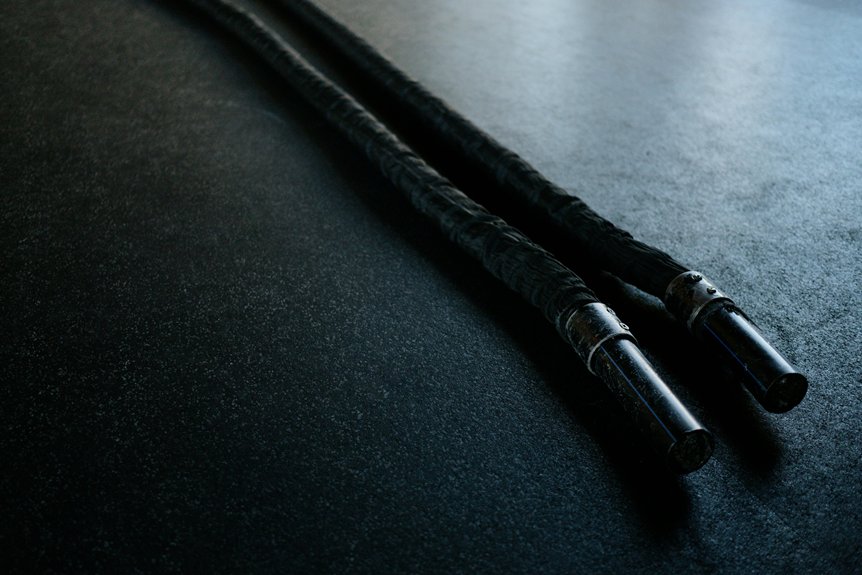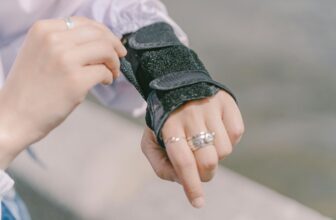
When it comes to CrossFit and HIIT, choosing the right wrist gear can make a significant difference in your performance and comfort. Lightweight wrist sleeves offer flexibility and support for dynamic movements, while wrist wraps provide stability for heavy lifts. Understanding the nuances between these options is crucial for optimizing your workouts. So, which type should you really be using? Let's explore the best options for your training style.
Understanding the Importance of Wrist Support in High-Intensity Workouts
When you push your limits in high-intensity workouts, the last thing you want to worry about is wrist pain or injury. Your wrists endure a lot during exercises like burpees, kettlebell swings, and overhead presses.
Proper wrist support can be a game-changer, helping to stabilize your joints and prevent strain. Without adequate support, you risk compromising your form, which could lead to more severe injuries down the line.
Additionally, wrist support can boost your confidence, allowing you to focus entirely on your performance instead of discomfort. Choosing the right gear can enhance your overall workout experience, ensuring you get the most out of each session while keeping your wrists protected.
Prioritizing wrist support helps you push harder and achieve your fitness goals.
Types of Wrist Gear: A Comprehensive Overview
Choosing the right wrist gear can significantly impact your performance and comfort during CrossFit and HIIT workouts.
There are several types of wrist gear to consider. Wrist wraps provide support for heavy lifts, stabilizing your wrist while allowing for mobility. They're ideal for weightlifting and high-rep exercises.
Wrist sleeves offer compression, enhancing blood flow while reducing the risk of injury. They're perfect for those who prioritize warmth and flexibility.
If you're looking for a minimalist option, wrist straps can help with grip without restricting movement.
Lastly, some prefer wrist supports that combine the benefits of wraps and sleeves for versatile use.
Understanding these options will help you find the wrist gear that suits your needs best.
Choosing the Right Wrist Gear for Your Training Style
As you plan your workouts, selecting the right wrist gear tailored to your training style can enhance your performance and prevent injuries.
If you focus on heavy lifting, consider wrist wraps that provide firm support and stability. For high-intensity interval training (HIIT), lightweight and flexible options like wrist sleeves may be more suitable, allowing for a full range of motion.
If you're into gymnastics movements, specialized grips can protect your wrists while offering better grip traction. Assess your specific needs—like support, flexibility, or protection—before making a choice.
Tips for Proper Use and Maintenance of Wrist Gear
To get the most out of your wrist gear, proper use and maintenance are essential.
First, ensure you wear your gear correctly to provide adequate support without restricting movement. Adjust straps snugly but not too tight to avoid discomfort or bruising.
After each workout, wipe down your wrist wraps or sleeves to remove sweat and grime, which can degrade materials over time. If your gear is machine washable, follow the manufacturer's instructions for cleaning.
Store your wrist gear in a cool, dry place to prevent mold or deterioration.
Lastly, inspect your gear regularly for wear and tear; replacing damaged items can prevent injuries and ensure you stay safe during intense workouts.
Conclusion
In conclusion, choosing the right wrist gear for CrossFit and HIIT is essential for both performance and injury prevention. Lightweight wrist sleeves are great for dynamic movements, while wrist wraps provide the support needed for heavy lifting. By understanding your training style and individual needs, you can find the perfect balance between flexibility and stability. Remember to maintain your gear properly to ensure it lasts and continues to support your fitness journey effectively.




